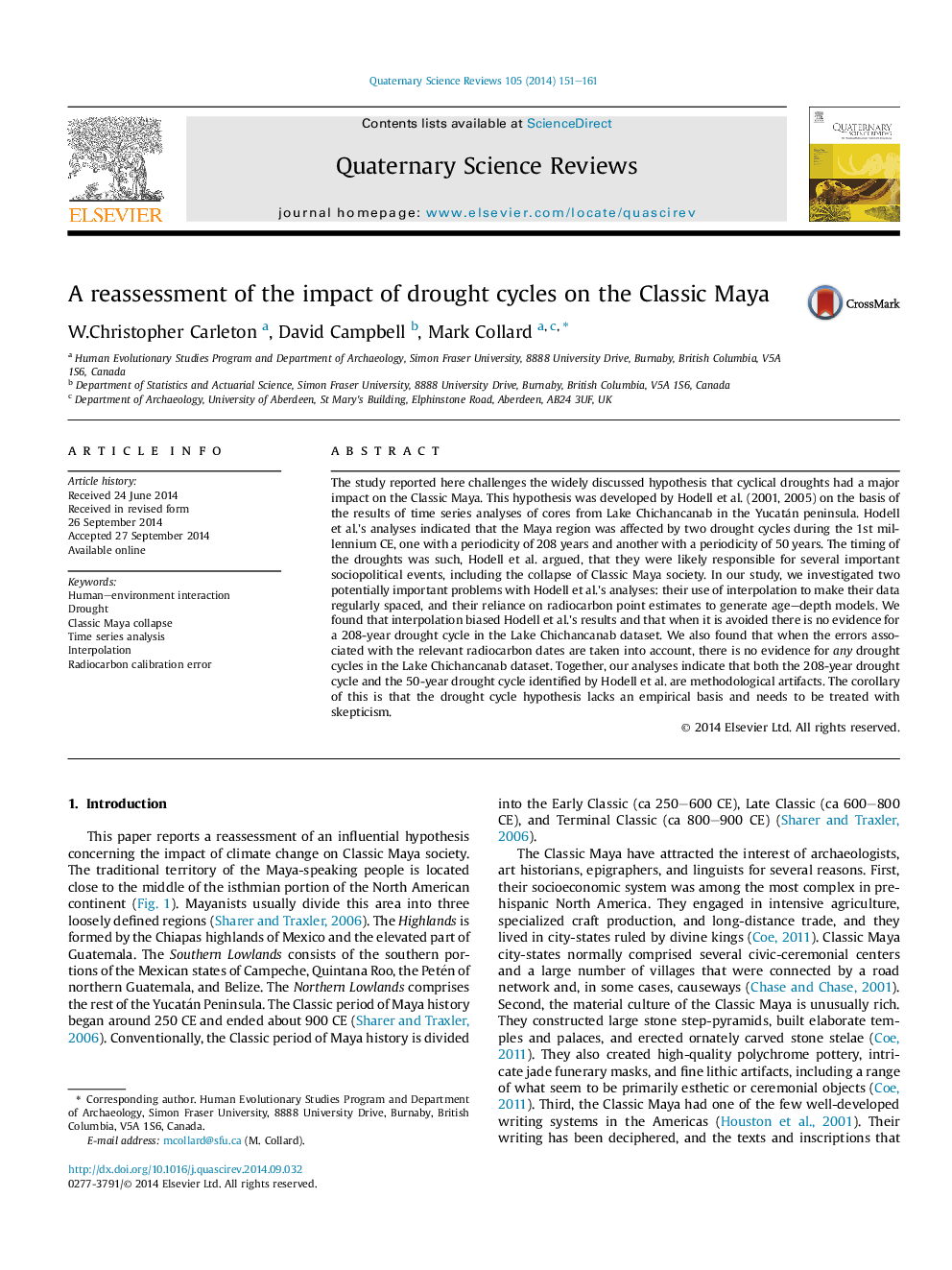| Article ID | Journal | Published Year | Pages | File Type |
|---|---|---|---|---|
| 6446118 | Quaternary Science Reviews | 2014 | 11 Pages |
Abstract
The study reported here challenges the widely discussed hypothesis that cyclical droughts had a major impact on the Classic Maya. This hypothesis was developed by Hodell et al. (2001, 2005) on the basis of the results of time series analyses of cores from Lake Chichancanab in the Yucatán peninsula. Hodell et al.'s analyses indicated that the Maya region was affected by two drought cycles during the 1st millennium CE, one with a periodicity of 208 years and another with a periodicity of 50 years. The timing of the droughts was such, Hodell et al. argued, that they were likely responsible for several important sociopolitical events, including the collapse of Classic Maya society. In our study, we investigated two potentially important problems with Hodell et al.'s analyses: their use of interpolation to make their data regularly spaced, and their reliance on radiocarbon point estimates to generate age-depth models. We found that interpolation biased Hodell et al.'s results and that when it is avoided there is no evidence for a 208-year drought cycle in the Lake Chichancanab dataset. We also found that when the errors associated with the relevant radiocarbon dates are taken into account, there is no evidence for any drought cycles in the Lake Chichancanab dataset. Together, our analyses indicate that both the 208-year drought cycle and the 50-year drought cycle identified by Hodell et al. are methodological artifacts. The corollary of this is that the drought cycle hypothesis lacks an empirical basis and needs to be treated with skepticism.
Related Topics
Physical Sciences and Engineering
Earth and Planetary Sciences
Geology
Authors
W.Christopher Carleton, David Campbell, Mark Collard,
